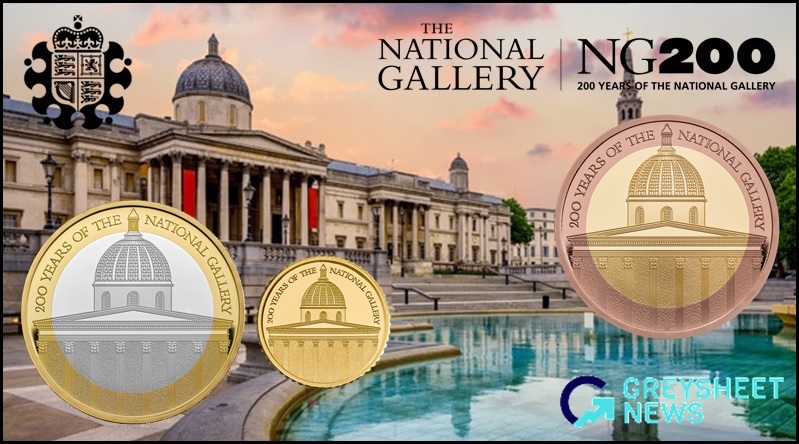The National Gallery is regarded as one of the greatest art galleries in the world. From its very beginnings, the National Gallery was founded by an act of Parliament in April 1824. With just 38 pictures acquired from the financier John Julius Angerstein for the princely sum of £57,000 equal to more than £5,200,000 in 2024. The money paid also included title to his stately home located at 100 Pall Mall where the works of art were on display. It soon became obvious that a new, larger building would be needed to house additional works and in 1831 Parliament stepped in again and agreed to construct a building for the new National Gallery at Trafalgar Square. Designed by William Wilkins, the familiar and impressive façade of Wilkins’ original design has remained relatively intact from when it was first inaugurated. However, the rest of the Gallery structure has been altered numerous times over the years as the art collections grew larger and more space was needed. The present Galley covers over 46,000 square metres or almost 500,000 square feet.
Today The National Gallery’s collection spans back to the 13th century and boasts more than 2300 paintings featuring works by British artists such as William Hogarth and John Constable, as well as famous works from esteemed international artists, including Rembrandt and Vincent van Gogh. The impressive location in the heart of Trafalgar Square is visited by more than three million people in 2023. For 2024, there will be several exhibitions throughout the year highlighting the bicentenary anniversary with admission free to all visitors.
The reverse side is designed by Edwina Ellis who has skilfully depicted the National Gallery at the centre of the design marking its bicentenary, with the anniversary itself framing the building in a semicircle with the commemorative text 200 YEARS OF THE NATIONAL GALLERY placed above the primary design along the upper rim. The obverse side bears the effigy of HM King Charles III created by British sculptor Martin Jennings and introduced onto UK Coinage in 2022. The obverse also includes the year of release 2024 and the denomination 2 POUNDS or 50 PENCE as part of the legend surrounding the King’s likeness. The gold, silver and base metal £2 options all feature the incused letter inscription on the edge which reads MAIORVM GLORIA POSTERIS LVMEN EST translated to ‘The glory of our ancestors is a light to our descendants’ and is inscribed in the Wilkins Building of the Gallery.
| Denomination | Metal | Weight | Diameter | Quality | Mintage limit |
| 2 Pounds | Bi-metallic | 12 g. | 28.4 mm. | BU | Unlimited |
| 2 Pounds | .925 Silver | 12 g. | 28.4 mm. | Proof & Plating | 2,760 |
| 2 Pounds | .925 Silver | 24 g. | 28.4 mm. | Proof & Plating | 1,210 |
| 50 Pence | .999 Gold | .08 g. | 8 mm. | Proof | 2,034 |
| 2 Pounds | .9167 Gold | 15.98 g. | 28.4 mm. | Proof | 185 |
The BU bi-metallic base metal coins are housed in a blister-pak type folder with informative text and illustrations. The sterling silver proof and silver piedfort coins are encapsulated and presented in a custom black vinyl covered case and the gold proof coins are presented in a polished hardwood case – all are accompanied with a numbered certificate of authenticity. The 50 pence gold coin is sealed in a tamper-proof security card and included specifications on the reverse side. For additional information, please visit the Royal Mint’s online webshop.


